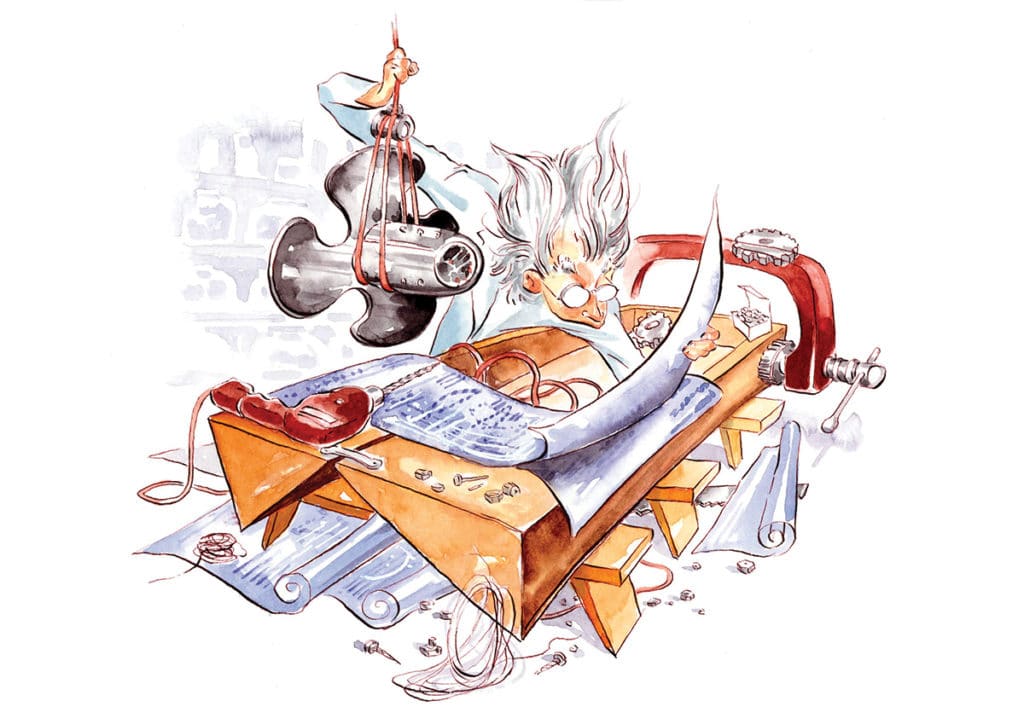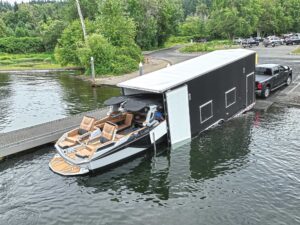
Ever hear of Albert Hickman? No? Well, I’m not surprised — almost no one has. But I am surprised that it’s come to this, because he should be a boating legend thanks to his innovative boat designs.
Hickman was one of the first to achieve high speeds on the water without resorting to high power. He proved that by forcing air under a hull it could be made to go faster; he invented the surface-piercing propeller, designed and devised tactics for the first high-performance torpedo boats, discovered that propellers generate lift, was the first to use counter-rotating props, built the first high-speed aircraft carrier, and came up with the idea for lifting strakes, sponsons and the nontripping chine. And one of his boat designs was the inspiration for the Boston Whaler. Pretty impressive stuff.
Hickman started tinkering in 1906, building a 20-foot boat that made 14.3 mph with only 7 horsepower — a record for such little power in boat designs. He then added side plates at the chines to trap air under the hull, which made it faster. To reduce drag, he came up with a surface-piercing propeller with no underwater gear.
His first props got the 20-footer well past 20 mph. He then took a break and did some creative thinking, and what he came up with and displayed at the 1913 New York Motor Boat Show couldn’t have been more unusual. As a reporter put it, “Any resemblance to a boat could not be recognized.”
It looked like a V-bottom boat that had been cut down the centerline and reassembled so the original sides were in the center and centerlines on the sides. Hickman called it a Sea Sled. Compared with other boat designs it was smoother and drier running; it was well behaved at sea; it easily held a course, resisted broaching, carried a greater load, planed faster and needed less power. On the negative side, the Sea Sled was difficult to build in wood, sensitive to loading aft and ugly. Even so, recreational models sold well and the military loved them.
In 1916 a 36-foot Sea Sled was the world’s fastest cruising cabin boat at 34 mph. In 1918 a 55-footer made 55 mph with only 1,800 hp while carrying a 10,000-pound bomber. With its airplane’s engines racing, the boat went fast enough to launch the plane from the rough English Channel to attack Germany.
Everything was going well for Hickman, at least until military politics, his ego and paranoia got in the way. From his notes, I eventually discovered why so little has been written about him or his boats. Apparently he was an arrogant, patronizing pain in the ass who most wished would just go away.
By the 1920s he began to entrench and stagnate, jealously patenting everything he did. His one last chance came in 1955 when Dick Fisher was looking to build a boat with his new foam-cored construction. Fisher and his designer, Ray Hunt, tested a 17-foot Sea Sled, liked it and made Hickman a deal. In typical fashion, Hickman began demanding increased concessions and control over his boat designs. It was finally too much for Fisher, who encouraged Hunt to take the Sea Sled design and add a center “hull” to its tunnel. Their reason of record was to eliminate propeller ventilation. More likely it was also to prevent lawsuits. The finished “cathedral” shape was revealed in 1958 as the 13-foot Boston Whaler.
Hickman never saw this final insult. With crushing legal fees and his company in receivership, he died still fighting for his boat designs. Where does the fault lie? I’d say somewhere between the fears of those who were less talented and Hickman’s own self-destructive passion and unrealistic vision of the world. So next time I see you outside the inlet, raise a cold one for poor Albert. May his Sea Sleds someday return.









